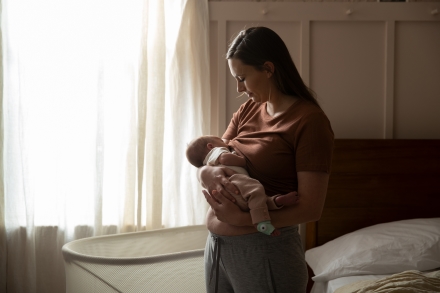Sleep associations
Getting more sleep is the goal of nearly every new parent. However, newborns need to wake frequently for many reasons, and usually depend on their caregivers to help them fall asleep.
Be thoughtful about sleep associations
In the early weeks at home with your newborn, it’s completely appropriate to use many strategies to help your baby sleep. As the weeks go by, you’ll want to be thoughtful about the “sleep associations” that your baby depends on to fall asleep. Examples of sleep associations are:
- Nursing or bottling Baby to sleep
- Rocking, bouncing or walking Baby to sleep
- Baby falling asleep on you or your partner for every sleep
- Using a swing or vibrating chair to help Baby fall asleep
- Baby falling asleep in the car or stroller for every nap
If your baby always needs one or more of these supports to fall asleep, that’s ok! That’s why you’re encouraging your baby to self-soothe and stay calm when you put Baby down drowsy, but awake, in their crib or bassinet.

Use bedtime to teach self-soothing skills
It’s best to work on teaching your baby these self-soothing skills at bedtime first then move on to naptime. This process can be hard on both the baby and you, so take your time as you move towards a bedtime routine that doesn’t utilize multiple sleep associations. This doesn’t mean you can’t do some of these sleep associations, but the key is to only allow your baby to become sleepy, not to actually fall asleep before you put them down. A consistent bedtime routine and practice of putting your baby down drowsy but awake while staying close by will get your baby much closer to becoming an independent sleeper. Once your baby is able to consistently fall asleep independently at bedtime they’ll also learn to fall back to sleep when they wake in the middle of the night. This is the secret to having a more successful little sleeper.

